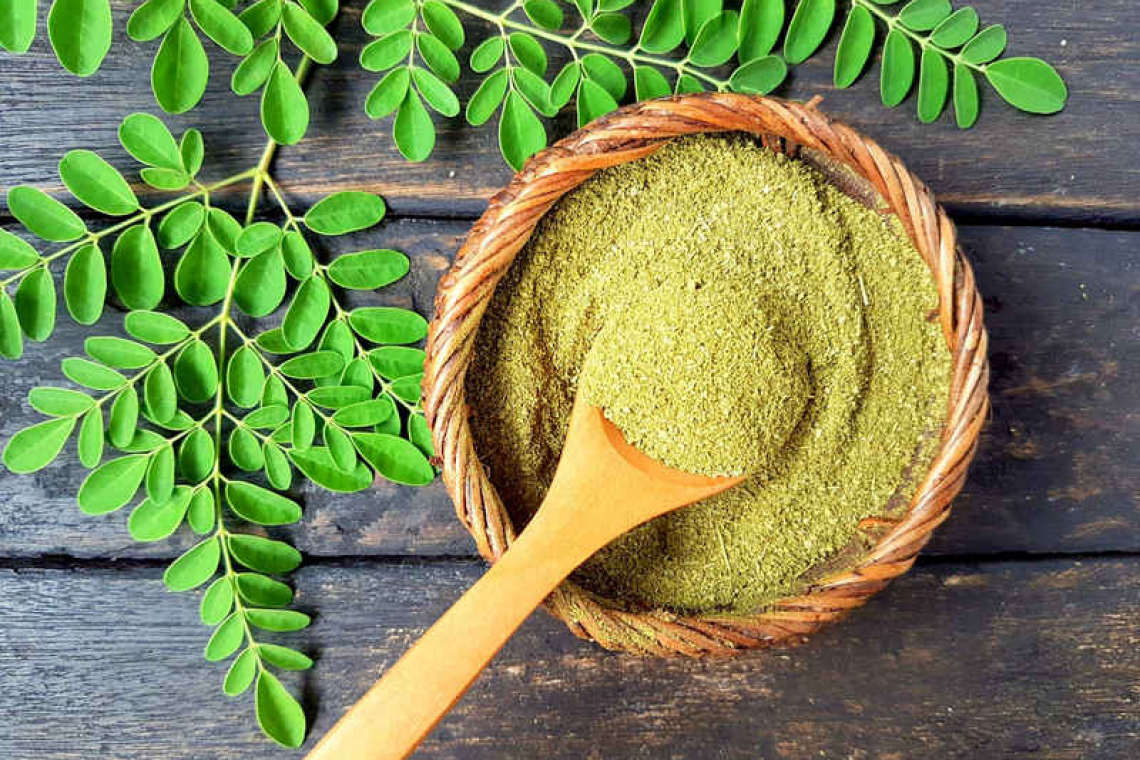Photo via Cookist.com
By Colin Michie.
Drought is an unlikely risk on St. Maarten, but water shortages and food insecurity are predicted for many, large, hot areas of the tropics. Although there are global mechanisms for managing this problem, there are many opportunities to improve our preparations. A scrubby tree with chaotic branches, fine leaves and twisted pods – Moringa oleifera – may allow us to reduce our dependence on industrial dairy and chicken farms. Several Moringa trees stand strong along the N7, celebrating their resistance to erosion, hurricanes and speeding motorists.
Our respect and recognition of Moringa trees is reflected in the venerable variety of its names. Malunggay, Sabina, Miracle tree, Marango, Tree of Life, Cedra, Drumstick tree, Horseradish tree, West Indian Ben, Benzolive tree, Ben Oil Tree, Shigru, Nebadaye or Ben aile. The Tamil name for “twisted pod,” Murungai is probably the origin of “Moringa”. Oral traditions suggest just about every part of this tree has been used for food, medication and cosmetics in many cultures.
Moringa trees typically accumulate a diversity of nutrients and micronutrients. Their root plumbing is skilled in finding water and prospecting for minerals in arid sandy soils. These talents outdistance other “superfood” plants, from the massive statuesque baobab to low level spinach plants or collards. Their leaves are high in protein (much more than in dairy yoghurt or eggs). As for minerals, here is more calcium than milk, 25 times more iron than Popeye’s spinach, more potassium than a banana, as well as zinc, magnesium and copper. The vitamin C content of fresh leaves is high; this is usually lost when they are dried. However, they contain several vitamins B and K, as well as more vitamin A than carrots, being rich in carotenoids.
But leaving individual nutrients aside, what are the effects of eating Moringa leaves? An increased blood antioxidant levels, reduced sugar levels and reduced measures of inflammation have been measured. These will benefit many with chronic illnesses. Some of these valuable effects are connected to the high levels of polyphenols and flavonoids in Moringa leaves. There are antimicrobial effects too: Leishmania parasites, spread by sandfly bites, more common in South America where it is known as espundia, die more rapidly if treatments are enhanced with Moringa.
Picking and eating Moringa leaves might not be straightforward. They are delicate, wilt easily and taste better when removed from the stems. They have a strong flavour – the African nickname is, after all, the “horseradish tree”. Leaves may be used in salads, soups, stews, pickles or beverages – smoothies and energy drinks are popular. In South India, where Moringa trees have been cultivated for many centuries, the pods are used in stews or rasams, for drumstick bhajis or raita.
Oil from Moringa seeds was used in skin and hair products by Egyptians and Romans. The oil is versatile: it is sweet and may be used in salads or perfumes; it makes an effective lamp oil. Moringa seedcake is good at water purification: removing micro-organisms and toxins. It is used as animal feed, along with leaves or stems, improving ruminant health and reducing their methane production. This unique tree delivers a benison of benefits from challenging environments, with almost no waste.
Famine killed more people than both world wars in the last century. Famines in Germany, Russian and the man-made famine, the hodomor, in Ukraine in the 1930s were followed by tragedies in Bengal, Cambodia, Ethiopia, North Korea and Somalia. Although deaths from famine have fallen over the last 50 years, levels of malnutrition remain high. Moringa has been employed recently in several African countries where high vitamin and iron content reduce blindness and anaemia in children. Moringa is added to maize, cassava, sweet potato and groundnut staples to improve their nutritional value, creating functional or fortified foods, nutraceuticals to nourish and promote health.
One particular effect of Moringa is currently receiving particular attention, with optimistic results. Moringa oil or leaves can promote breast milk by increasing prolactin production in mothers. Leaf or oil preparations have been used for this purpose traditionally in Africa and the Philippines. Successful breastfeeding is a hidden and challenging problem in wartime, or in the migration of displaced and refugee populations.
A Chinese herbal work described possible foods to consume in times of famine – it was published in 1406. Although preventing famine will take more than a tree or plant, Moringa is high on the list of treasured botanical resources. Whether you are keen to make a nutritious meal, biogas, forage for animals, prevent erosion, produce tanning agents or timber, Moringa’s bounty is waiting! We could probably all benefit from growing more Moringa.







